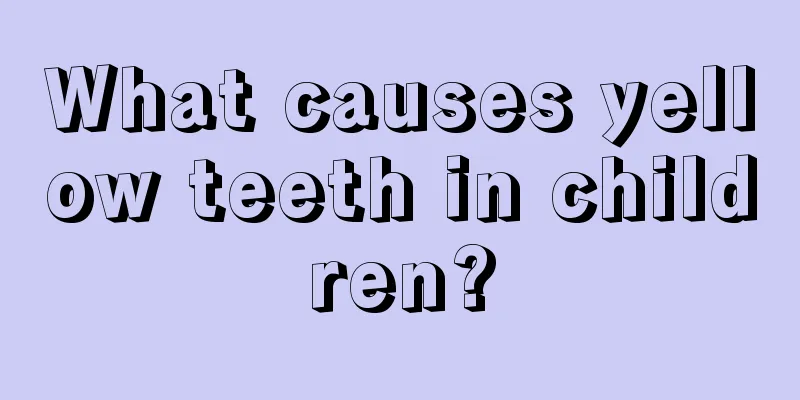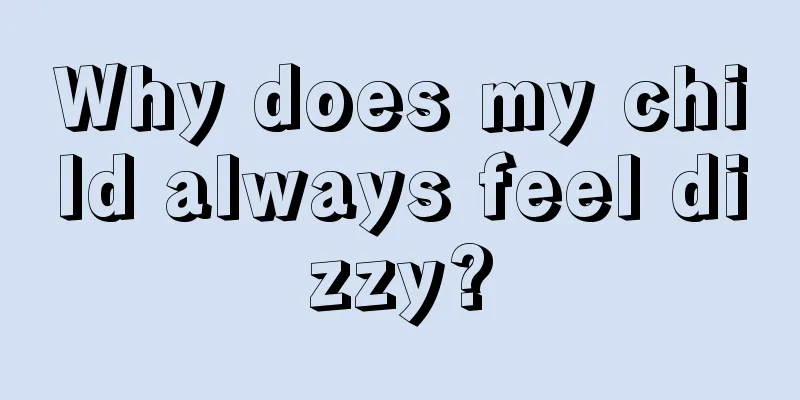What are the causes of neonatal hypoglycemia?

|
If a child's blood sugar concentration is too low after birth, it is easy to cause symptoms of hypoglycemia. For example, the child is prone to drowsiness, excessive sweating, pale complexion, and even respiratory arrest. This is very harmful to the child's health. Parents should take their children to the hospital for examination in time, and then carry out symptomatic treatment. 1. Symptoms of neonatal hypoglycemia Most people with hypoglycemia lack typical clinical symptoms, and the clinical manifestations of children with hypoglycemia vary depending on the degree of hypoglycemia. The clinical manifestations of the same hypoglycemia level vary greatly. In a minority of cases, symptoms may manifest clinically as poor response, sweating, pallor, chronic cyanosis, feeding difficulty, drowsiness, apnea, cyanosis, abnormal crying, tremors, shaking, and even convulsions. 2. Causes of neonatal hypoglycemia 1. Temporary hypoglycemia (1) Insufficient glucose storage is mainly seen in: ① Premature infants and infants with small gestational age have liver glycogen storage mainly in the last 3 months of pregnancy. Therefore, the younger the gestational age, the less glycogen storage and the lower the enzyme activity in gluconeogenesis; ② Perinatal stress response: hypoxia and acidosis increase catecholamine secretion, stimulate increased liver glycogenolysis, and anaerobic glycolysis increases glucose utilization; ③ Other conditions such as hypothermia, sepsis, congenital heart disease, etc. are often caused by insufficient calorie intake and increased glucose utilization. (2) Increased glucose utilization (transient hyperinsulinemia) is mainly seen in: ① Infants of diabetic mothers suffer from temporary hyperinsulinemia due to excessive blood sugar in the womb, and the blood sugar supply from the mother is suddenly interrupted after birth; ② Rh hemolytic disease causes destruction of red blood cells, leading to the release of glutathione, which stimulates an increase in insulin concentration. 2. Persistent hypoglycemia (1) Hyperinsulinemia is mainly seen in pancreatic islet cell hyperplasia, Beckwith syndrome, and pancreatic islet cell adenoma. (2) Endocrine defects such as congenital pituitary insufficiency, cortisol deficiency, glucagon deficiency, growth hormone deficiency, etc. (3) Genetic metabolic diseases: ① Abnormal glucose metabolism such as glycogen storage disease type I and type III; ② Fatty acid metabolic diseases such as medium-chain acyl-CoA dehydrogenase deficiency; ③ Amino acid metabolic defects such as branched-chain amino acid metabolism disorders and leucine metabolism defects. |
<<: What is the cause of the red spots in the newborn's eyes?
>>: What to do if your newborn has intestinal gas
Recommend
How to prevent upper respiratory tract diseases in children?
As we all know, pediatric respiratory diseases in...
What are the symptoms of lupus nephritis in children?
The issue of lupus nephritis in children is an is...
Factors that cause sneezing in infants and young children
In daily life, many young parents do not have muc...
What to do if your baby has a red butthole
As we all know, in the process of caring for babi...
What is the reason for a child's yellow tongue?
In the field of traditional Chinese medicine, dis...
Treatment for baby's cough and vomiting in the middle of the night
We all know that many people have experienced cou...
Reasons for dry cough without phlegm and itchy throat in children
Parents often encounter various problems when tak...
Why does an 8-year-old child wet the bed?
If an eight-year-old child still wets the bed, it...
What's wrong with the little girl's hair loss?
Why is the little girl losing her hair? Many pare...
Can children eat pigeon eggs?
Eggs are a common food in our daily diet, and we ...
What causes red and itchy eyes in children?
Now with the departure of winter and the gradual ...
What is the treatment for mycoplasma infection in children?
We all know that the younger the child is, the we...
What to do if your child's head circumference is too large
We all know that a baby's large head circumfe...
What is the appropriate water temperature for a newborn baby's bath?
We all know that caring for a newborn requires sp...
What is going on when a child has a seizure?
The physical health of children is very important...









